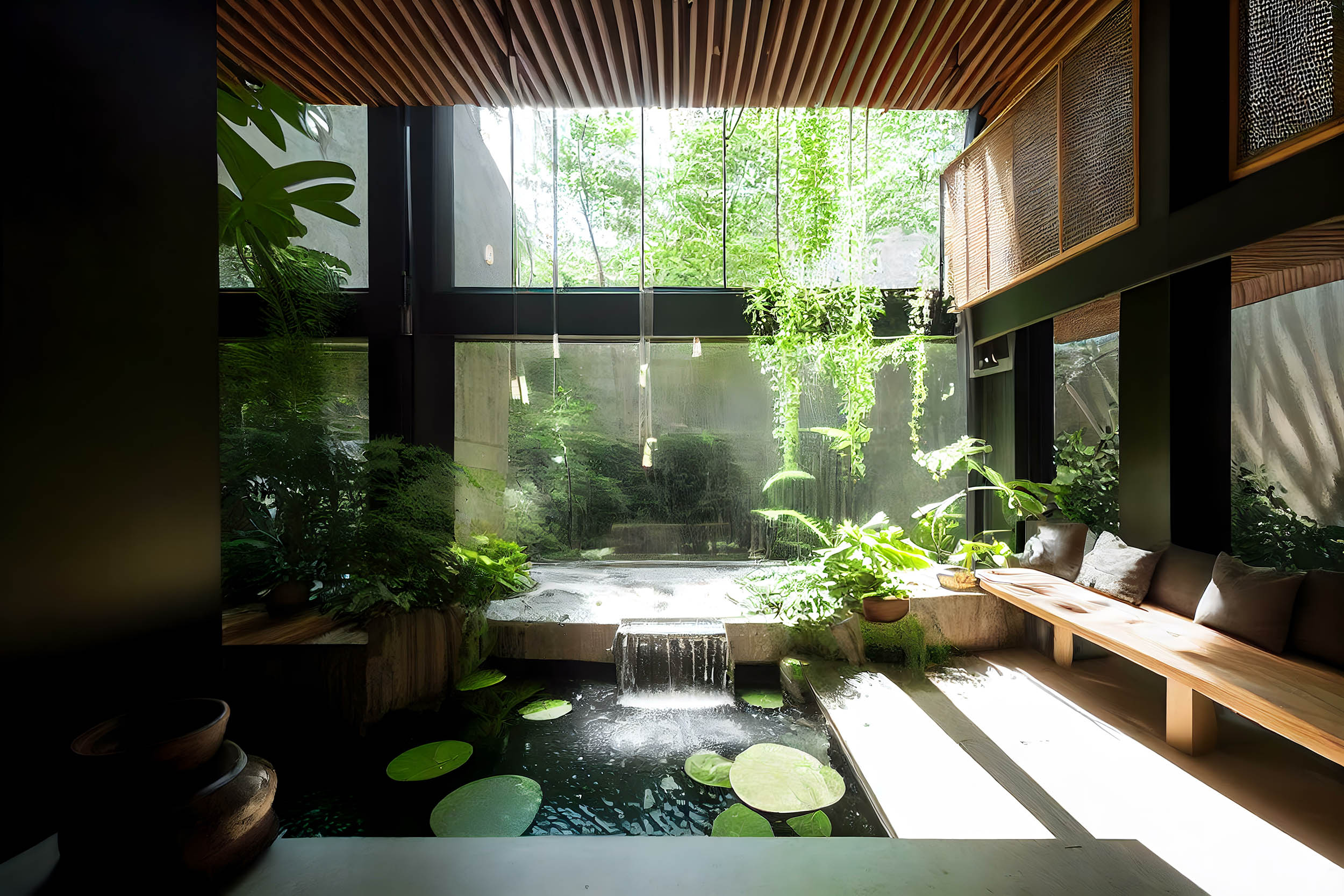In DRAW’s mission towards achieving/implementing positive impact design, understanding how architecture and the built environment influence human health and wellbeing becomes essential in designing with empathy and activism. The general concept of “design as therapy” considers and integrates several diverse design fields and philosophies, integrating therapeutic architecture, spatial or environmental psychology, sensory design, and biophilic design.
Therapeutic Architecture
Architecture can impact, influence, and improve occupants’ physical comfort and wellbeing. This has been a noteworthy focus in the push towards more sustainable and energy-efficient designs and can be managed through tangible [factors] such as thermal control, lighting levels, etc. While mental comfort is not explicitly addressed in this regard, it is an assumption that mental wellbeing follows physical wellbeing. When not directly considered, emotional comfort, mental health, and wellbeing can be overlooked and neglected in the design process. While our physical state can affect our mental state, it is also true that our mental state can affect our physical state. Scientific research and studies have been conducted on how promoting psychological recovery and reducing stress aids physical recovery. These have produced practice-based evidence that is the foundation for evidence-based design. Evidence-based design has been primarily utilized in the healthcare industry; however, its principles can be applied to other projects to produce healthier environments for occupants. When it is properly addressed and considered, architecture and design have the capacity to be a form of effective therapy While it could never completely replace modern science and medical efforts, well-designed architecture and spatial design can positively impact and help aid the healing process, improving mental health and wellbeing.
Spatial Psychology
Understanding spatial, also known as environmental, psychology means understanding “human relations and behaviors within the context of the built and natural environments.” Several design factors can influence this relationship and the interaction between people and the space they inhabit. These can range from broader design principles that help to shape space, such as form, proportion, scale, and organization, to more tangible aspects, such as lighting, color, acoustics, etc. How they are utilized and manipulated in the design directly affects how people respond to and interact with the space. Even though spatial psychology offers designers additional insight, its insight does not offer universal, one-size-fits-all guidelines that can be followed to achieve specific outcomes in design. Project-specific variables and constraints play a role in understanding and shaping space to achieve specific goals. Spatial psychology offers designers additional insight during the design process, and it is up to the designer to understand and respond accordingly.
Sensory Design
The control and manipulation of those factors that appeal to the senses enter the realm of sensory design. When related to architecture, sensory design involves the design of space and environmental stimuli to appeal to each of the senses in order to orchestrate and accommodate for, different sensory experiences. Though vision is the main sense that influences design conception, the other senses equally influence design reception, whether it is conscious or not. Sensory design seeks “to go beyond vision and explore the richness of the built environment through textures, smells, and sounds.” While it can be as simple as selecting certain colors to generate specific moods or selecting specific materials and textures, sensory design can be integrated into the architecture and built environment itself. It evolves the built environment from a dominantly visual experience into something more interactive and collectively/wholistically felt. Soundscapes, such as the Sea Organ, or even the integration of simple sound sculptures into the design are just a couple of examples how sensory design and appealing to different senses can help elevate architecture and the built environment.
Biophilic Design
Lastly, biophilic design, according to the International Living Future Institute, “is the practice of connecting people and nature within our built environments and communities.” It is more than just including a few plants within a room, biophilic design “focuses on those aspects of the natural world that have contributed to human health and productivity.” It is more than Beyond just including a couple of plants in a room; biophilic design must be deeply integrated throughout the architecture and space as a connected, wholistic experience in order to achieve the proper effect. Direct connections with nature include access to natural ventilation and lighting, plants and landscapes, water, etc., while more indirect connections can be made through the usage of natural materials and textures, views to natural landscapes, biomimicry through organic shapes, forms, patterns, etc. When biophilic design is properly cultivated and utilized throughout a project, it allows the end users to reap the benefits of that being in nature, and provides human health and wellbeing, while remaining in the built environment.
When you understand how to control, manipulate, and design these interlacing concepts, projects, and spaces, promote emotional comfort and mental wellbeing. Focusing on architecture as another tool for therapy allows designers to positively impact the occupants of a space by designing with empathy and activism.




